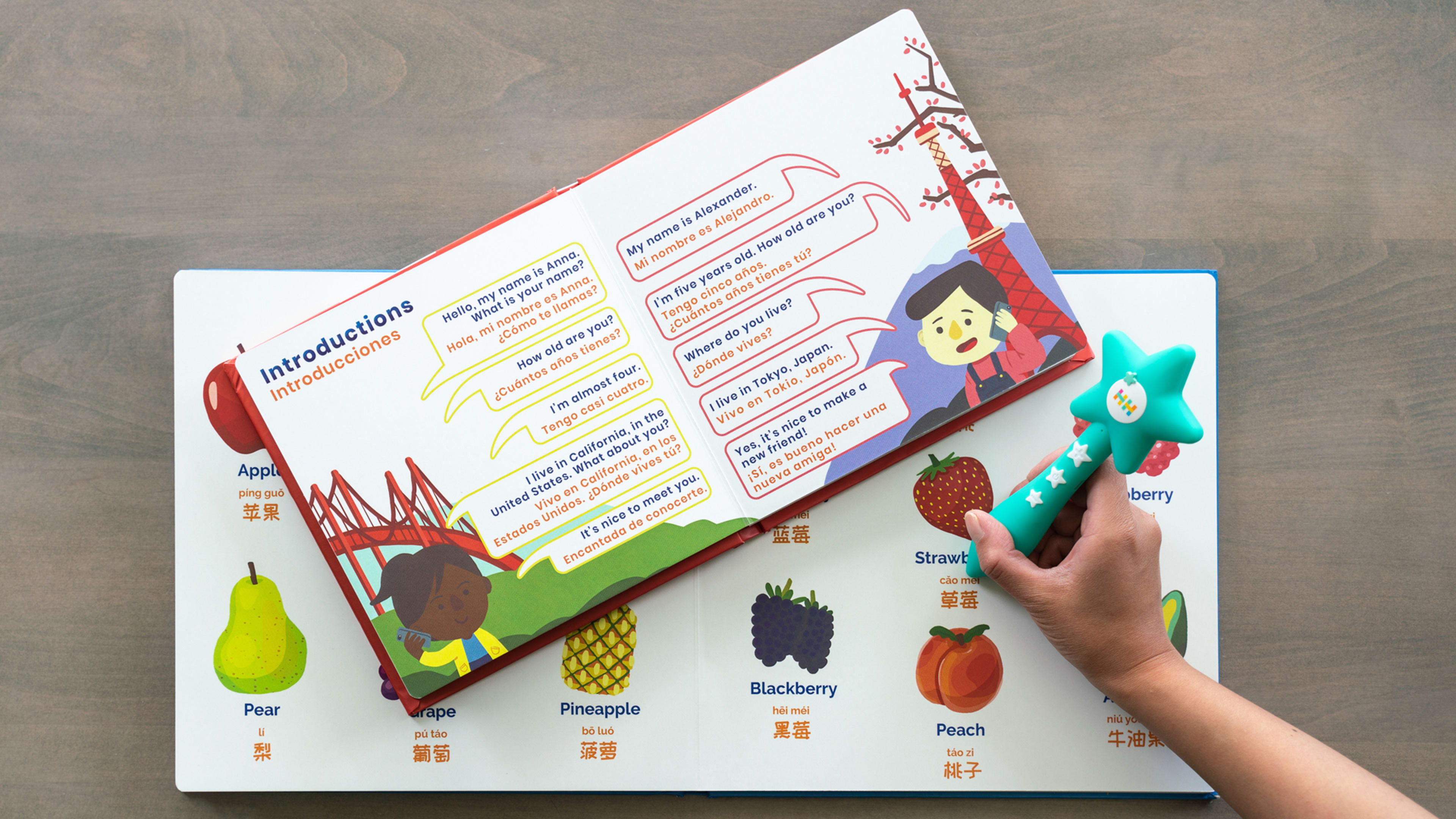My 3-year-old has been playing in her room by herself for an hour. I’m beginning to worry she is up to no good: Is she “decorating” her walls with a Sharpie or perhaps systematically pulling out tufts of wool from her rug? But I take a peek, and there she is, right where I left her, flipping through a bilingual picture book full of Spanish and English words created by a new startup called Habbi Habbi.
The thing that is keeping her captivated is a little “reading wand,” complete with a star-shaped top that makes it easier for small children to hold and also makes it feel more like a magic wand. And to my daughter, the wand really does feel magical. When she points it at the book, it says the word. She taps a picture of a mother and the wand says, “mommy” then “mamá.” But she’s discovered other little surprises hiding in the book. Sometimes, when she taps a random part of the page, the wand might play music. She’s transfixed but also learning something.
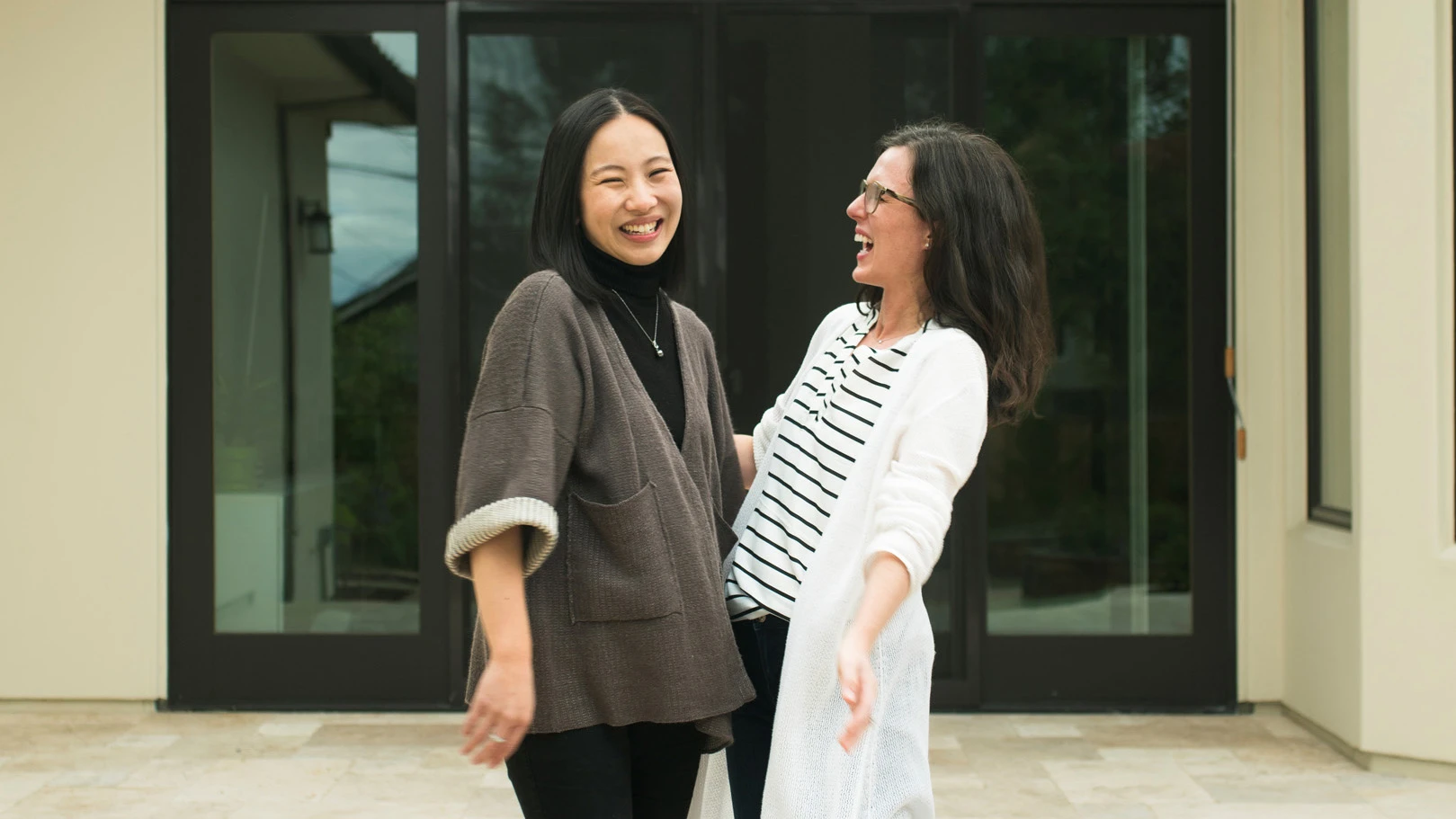
This highly engaging toddler UX was created by Anne-Louise Nieto and Hanna Chiou, cofounders of Habbi Habbi. The company launched with bilingual books in both Spanish and Mandarin for children aged 1 to 10. For each language, there are four books that cover first words, first phrases, emotion, and careers. The set costs $85. The wand, which works through computer vision, is compatible with any Habbi Habbi book. The tip of the wand identifies the pixels on a page, reading out the specific word or illustration in question. The company plans to launch new languages soon.
The cofounders met while working as management consultants at the Boston Consulting Group, where they specialized in advising companies that created consumer products. They both wanted to help their children learn languages besides English but couldn’t find many resources for people like them, native English speakers who want to introduce their kids to other languages. Chiou is from a Chinese family and wanted her kids to pick up Mandarin, and Nieto is married to a Spanish speaker but isn’t fluent herself. “If parents speak multiple languages fluently, they can start teaching their kids the other language when they are infants and buy them children’s books in other languages,” Nieto says. “But there are many of us who aren’t fluent in another language and revert to speaking to our kids in English. We need products that are designed to be truly bilingual.”
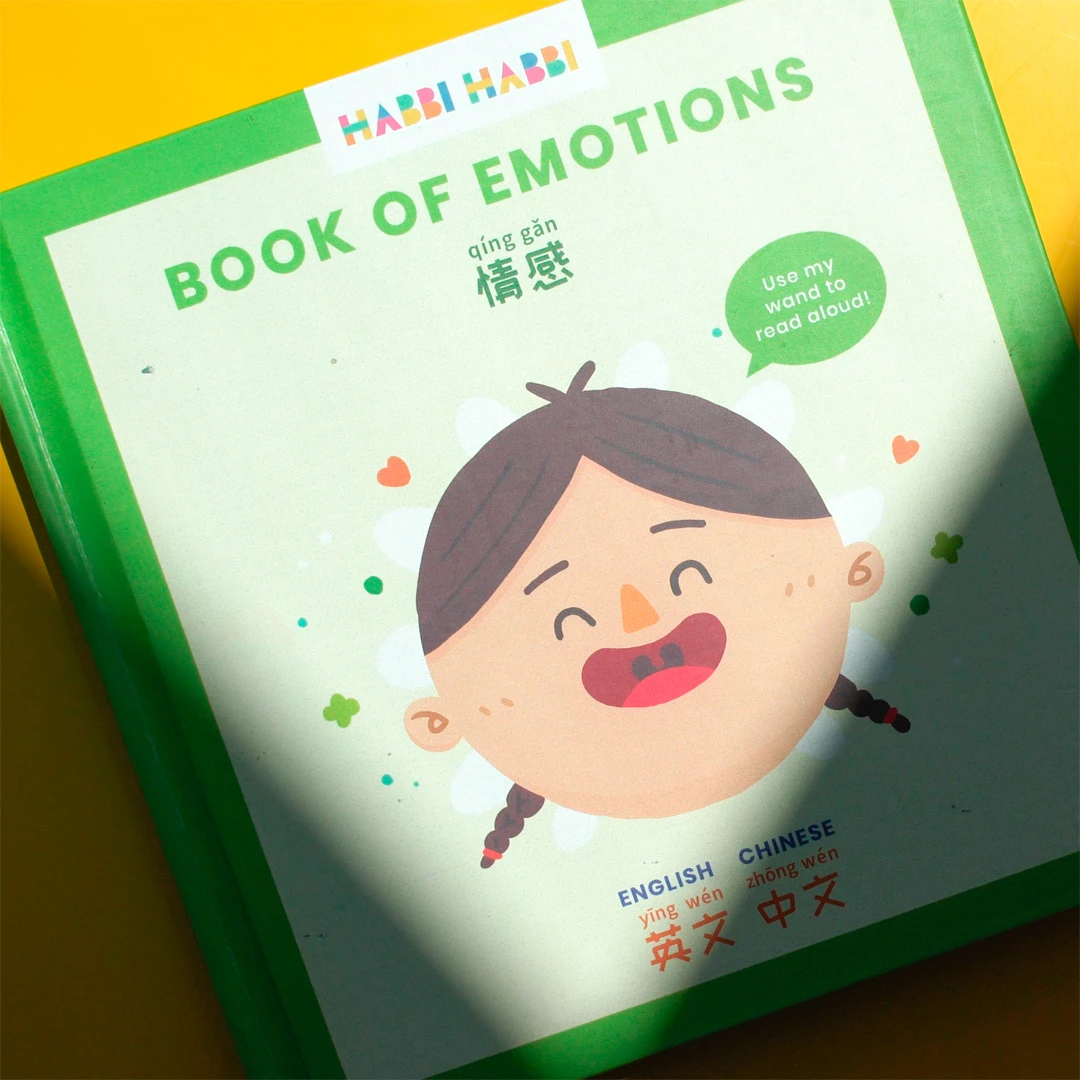
This is something I can relate to. I grew up in Paris and learned French as a second language but haven’t lived in a French-speaking country for decades. Meanwhile, my husband only speaks English. I have tried to teach my daughter French, but it’s hard and we both give up quickly.
This kind of scenario is becoming increasingly common in the United States. There has been a 2% rise in bilingual children in the country over the past decade, an increase of 1.2 million kids. But there’s a lot of variation in terms of what this means. In some cases, kids don’t speak English at home: that’s true of 44% of kids in California and 2% of kids in West Virginia. Around 4% of children who grow up in non-English speaking households, or 2.4 million, have trouble speaking English. But there are many other homes where multiple languages are spoken simultaneously, or parents simply want their kids to be multilingual, since this is associated with better mental flexibility, increased cultural competence, stronger family connections, and later in life, access to better paying jobs.
Habbi Habbi’s products are designed for kids across the spectrum of language learning and a range of ages. As Nieto and Chiou worked on developing these products, they realized that one of the keys to success would be to creating the most engaging possible experience for kids. This wasn’t easy, particularly since kids are used to being hyper-stimulated with screens and digital media. “These books aren’t actually that high tech,” says Nieto. “There is no technology embedded in the book itself. It’s just the wand that makes the experience unique.”
Before launching the product, the cofounders opened a pop-up in Stanford Shopping Center in the heart of Silicon Valley, in a cozy living-room like environment. While all the products were for sale, the founders were actually creating an elaborate focus group where they could see how kids interacted with products. “Our experience as parents is that it is relatively easy to capture a kid’s attention for a short time, but there are very few toys that keep kid’s interested for a long time,” she says.
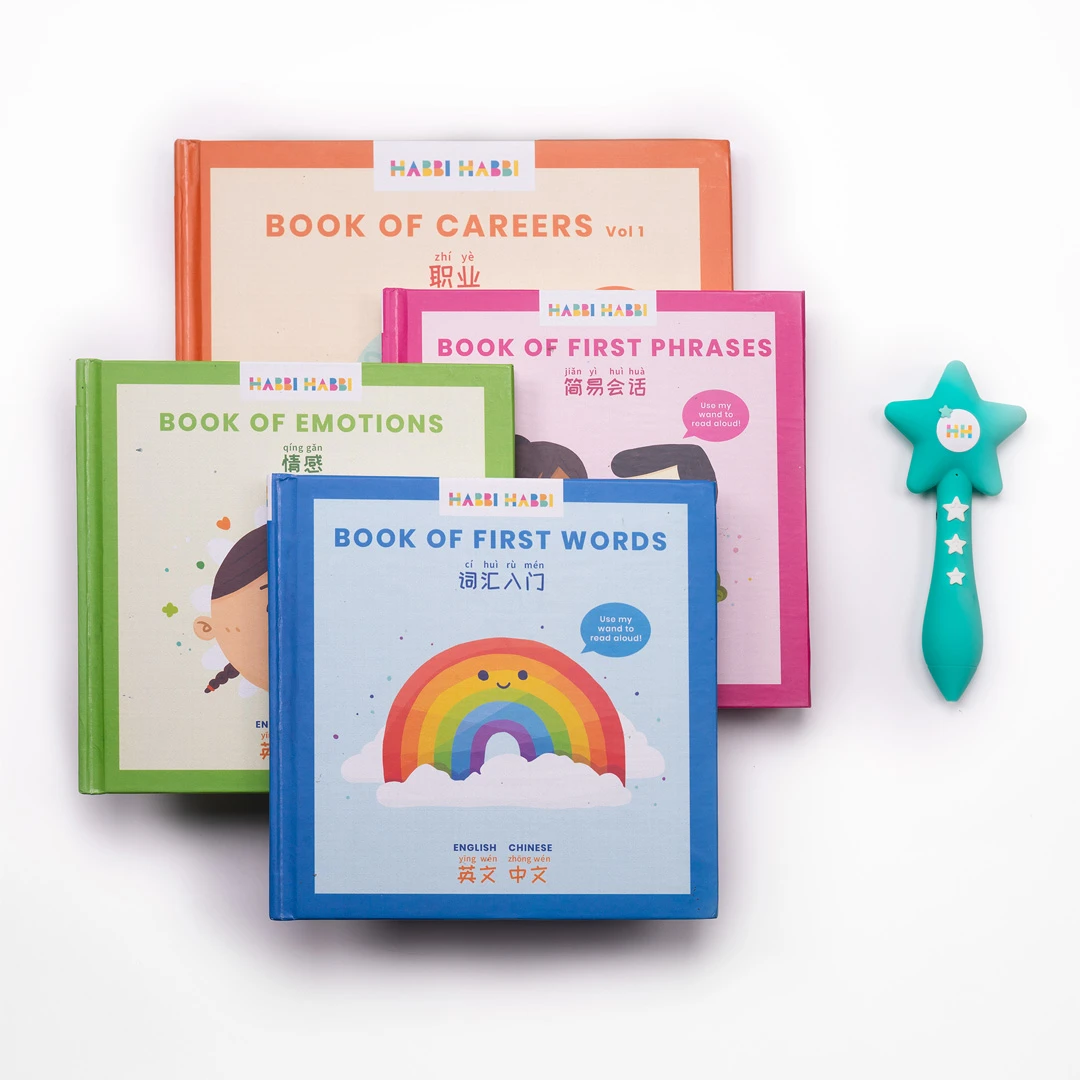
Nieto and Chiou discovered a couple of principles that seemed to keep kids engaged for longer. For one thing, kids like feeling empowered and like they are mastering a new skill. With these books, kids who don’t yet know how to read like to feel like they are “reading” with the wand. That was true of my kid. Right now, she needs a parent to read her books, but she can spend an afternoon with these books by herself tapping the wand on different parts of the page and putting together the narrative. The cofounders also found that children like games where it feels like there are many more possibilities than meets the eye. This is why they’ve included easter eggs throughout the book, where a tap of the wand might result in a song or other sound. Kids stay focused on the experience because they never know where they might find a new surprise.
And yet, the books are still educational. Nieto and Chiou worked on the content of the book themselves, but they also worked with teams of language experts to come up with the translations in the book. “There’s an art and science to translating,” says Nieto. “Often one English word may translate into several words in another language, and vice versa.”
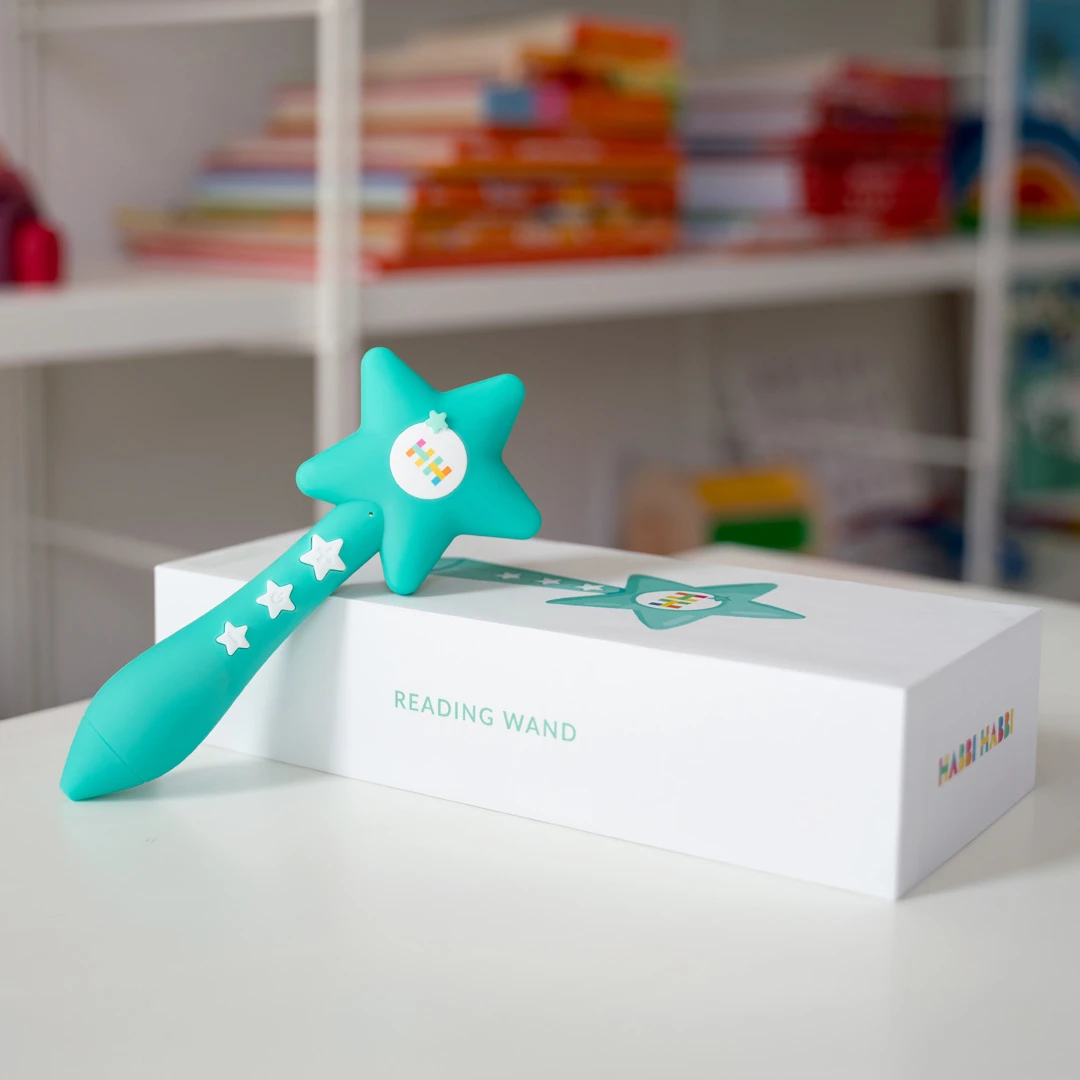
While kids of all ages can enjoy all the books, they have increasing levels of complexity. The first-words books presents simple images of things like animals and colors: Kids who are just learning how to read may begin recognizing the words in this book. My daughter, for instance, was able to make out simple English words like “bus” or “red,” while also hearing their Spanish equivalent. So in some ways, the book was also helping her learn how to spell in English.
Later books in the series present more complex ideas and phrases. The one about careers, for instance, features women who are all moms but also have exciting careers like “product manager,” “surgeon,” “entrepreneur,” and “judge.” (There’s also a stay-at-home mom who is described as “Chief Home Officer.”) This book features words like “surgical cap” and “breast pump.”
The books first launched in mid-September and so far, parents have been very enthusiastic about them, the cofounders say. They’ve already received requests to create books in other languages, like French and Hindi. “Some parents have even asked if we can create custom products for them,” says Nieto. “Some were so desperate they said they would even help with the translation.”
Nieto and Chiou are planning to expand to other languages shortly, but for the time being, they already have new English-Chinese and English-Spanish books to add to the list, including “Acts of Kindness” to reinforce ideas like forgiveness, listening, and respect, as well as “Stories of Grit,” to celebrate immigrant experiences.
Recognize your brand’s excellence by applying to this year’s Brands That Matter Awards before the early-rate deadline, May 3.
